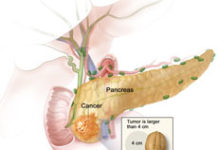With a 4-year follow-up of KEYNOTE-048, first-line pembrolizumab alone and pembrolizumab-chemotherapy continued to demonstrate overall survival (OS) benefit compared with cetuximab-chemotherapy in patients with recurrent or metastatic head and neck squamous cell carcinoma (HNSCC). A survival plateau at approximately 20% became apparent around the 4-year landmark for all patients receiving pembrolizumab alone. For patients receiving pembrolizumab-chemotherapy, a survival plateau at approximately 30% was observed for the PD-L1 combined positive score (CPS) ≥ 20 population and at approximately 20% for the CPS ≥ 1 and total populations.
These results highlight that some patients have long-term response. This was also reflected in duration of response that was substantially longer with pembrolizumab and pembrolizumab-chemotherapy in all populations. Retreatment with pembrolizumab may provide benefit in some patients. Patients responded well to subsequent treatment after pembrolizumab-based therapy. The latest findings are published by Prof. Kevin J. Harrington of The Institute of Cancer Research and The Royal Marsden NHS Foundation Trust, National Institute of Health Research Biomedical Research Centre in London, UK and study colleagues on 11 October 2022 in the Journal of Clinical Oncology.
The authors wrote in the background that recent success with PD1 inhibitors has led to a paradigm shift in the treatment of HNSCC. The inclusion of first-line pembrolizumab in the treatment paradigm is based on results of the phase III KEYNOTE-048 study of pembrolizumab alone and with chemotherapy versus cetuximab with chemotherapy. However, with a median follow-up of approximately 1 year at final analysis, the long-term impact of pembrolizumab-based treatment remained unknown. In the latest article, the study team presents post hoc analysis after an approximately 4-year follow-up, including efficacy and progression-free survival on next-line therapy (PFS2).
Patients were randomly assigned (1:1:1) to pembrolizumab, pembrolizumab-chemotherapy, or cetuximab-chemotherapy. Efficacy was evaluated in PD-L1 CPS ≥ 20, CPS ≥ 1, and total populations, with no multiplicity or alpha adjustment.
The median study follow-up was 45.0 months. At data cut-off on 18 February 2020, OS improved with pembrolizumab in the PD-L1 CPS ≥ 20 (hazard ratio [HR] 0.61; 95% confidence interval [CI] 0.46 to 0.81) and CPS ≥ 1 populations (HR 0.74; 95% CI 0.61 to 0.89) and was non-inferior in the total population (HR 0.81; 95% CI 0.68 to 0.97). With pembrolizumab-chemotherapy, OS improved in the PD-L1 CPS ≥ 20 (HR 0.62; 95% CI 0.46 to 0.84), CPS ≥ 1 (HR 0.64; 95% CI 0.53 to 0.78), and total (HR 0.71; 95% CI 0.59 to 0.85) populations.
The objective response rate (ORR) on second-course pembrolizumab was 27.3%. PFS2 improved with pembrolizumab in the PD-L1 CPS ≥ 20 (HR 0.64; 95% CI 0.48 to 0.84) and CPS ≥ 1 (HR 0.79; 95% CI 0.66 to 0.95) populations and with pembrolizumab-chemotherapy in the PD-L1 CPS ≥ 20 (HR 0.64; 95% CI 0.48 to 0.86), CPS ≥ 1 (HR 0.66; 95% CI 0.55 to 0.81), and total (HR 0.73; 95% CI 0.61 to 0.88) populations. PFS2 was similar after pembrolizumab and longer after pembrolizumab-chemotherapy on next-line taxanes and shorter after pembrolizumab and similar after pembrolizumab-chemotherapy on next-line non-taxanes.
These results support earlier findings of KEYNOTE-048. The authors underlined that the results represent unprecedentedly favourable outcomes for patients with recurrent or metastatic HNSCC and demonstrate the broad benefit of pembrolizumab-based treatment, including in patients with poor prognostic markers such as smoking history and HPV-negative oropharyngeal cancer.
In a companion oncology grand rounds article that placed original report into clinical context, Dr. Alan L. Ho of the Memorial Sloan Kettering Cancer Center and Weill Cornell Medical College in New York City, NY, US wrote that although KEYNOTE-048 was not designed to directly compare the outcomes observed between the pembrolizumab alone and pembrolizumab-chemotherapy arms, considering how each performed relative to cetuximab-chemotherapy within different CPS subgroups aids in clinical decision making for individual patients.
Dr. Ho stated that despite the OS advantage of pembrolizumab-based treatment, neither arm meaningfully improved ORR or PFS over cetuximab-chemotherapy. Efficacy of pembrolizumab in frail or chemotherapy-ineligible patients with HNSCC, however, is not well understood, and superiority to lower toxicity cytotoxic options has not been established. Post hoc KEYNOTE-048 data analysis revealed that PFS2 was prolonged with pembrolizumab with or without chemotherapy over cetuximab-chemotherapy in the same CPS categories where OS was improved. However, only approximately half of the patients in this analysis received subsequent drug, making it difficult to conclude that this observation reflects greater efficacy with second-line treatment after pembrolizumab progression.
For chemotherapy-fit patients in whom achieving tumour regression is a priority, pembrolizumab-chemotherapy is preferred; other patients may be considered for pembrolizumab monotherapy. Patient preference for how to balance treatment side effects and efficacy with treatment selection must be prioritised in the palliative treatment setting, particularly given the more favourable side effects profile of pembrolizumab without chemotherapy.
The KEYNOTE-048 study was supported by Merck Sharp & Dohme LLC, a subsidiary of Merck & Co, Inc, Rahway, NJ, US.






